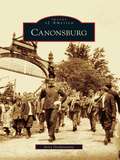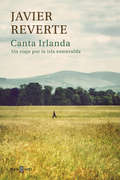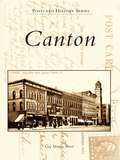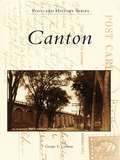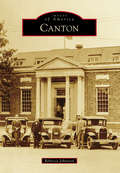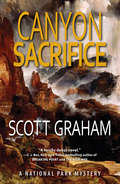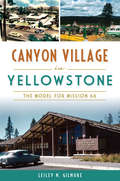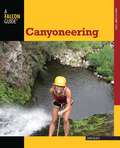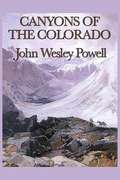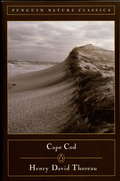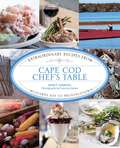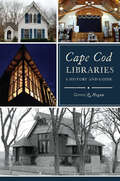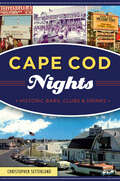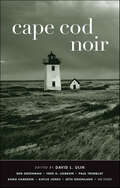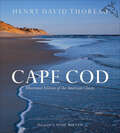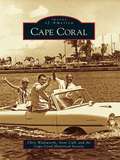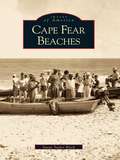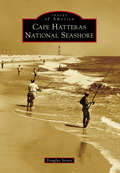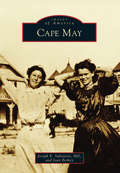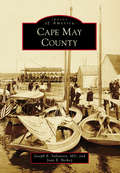- Table View
- List View
Canonsburg
by Jerry GrefenstetteLocated less than 20 miles southwest of Pittsburgh, Canonsburg is a small town that arose during the late 1700s, serving initially as a postal stop between Pittsburgh and Washington. Incorporated in 1802, Canonsburg thrived as a market town, providing such goods as grain and whiskey. In the 1800s, Jefferson College, rising from John McMillan's original one-room log house, became one of the largest colleges in the country. By the end of the 19th century, Canonsburg found its niche in manufacturing. The town's flourishing steel and tin business allowed Canonsburg to survive the Great Depression with minimal impact. During World War II, steelmakers were able to successfully adapt their factories to handle the production of naval parts. Among its more famous citizens are Dr. Jonathan Letterman, an early proponent of battlefield medical treatment; singers Perry Como and Bobby Vinton; and the 1950s vocal group the Four Coins.
Canta Irlanda: Un viaje por la isla esmeralda
by Javier ReverteJavier Reverte vuelve a la literatura de viajes en este fascinante recorrido por la salvaje Irlanda. Canta Irlanda es un libro en el que se reúnen y confunden el lirismo y el viaje, los caminos de tierra y los caminos de la poesía. Irlanda es un país crecido sobre la leyenda, sobre el sufrimiento histórico y sobre las canciones populares. Y su literatura es tan rica -el país que proporcionalmente da más escritores en el mundo- como su folclore, representado por innumerables baladas que todos los irlandeses conocen.A lo largo de este recorrido por Irlanda, Javier Reverte traza, con su habitual maestría narrativa, con su tierno humor y su mirada cálida, el retrato del ayer y el ahora de este pueblo que no tiene dibujadas ni águilas ni leones en sus escudos y banderas, sino sencillamente una lira gaélica. La crítica ha dicho...«Un hermoso retrato de un país que respira lirismo, poesía, música y se deja habitar por todos los que, como Javier Reverte, tienen el alma llena de esos mitos que, por evocadores, se antojan reales.»ABC«Como en algunas civilizaciones antiguas, la cultura debería ser contemplada como algo esencial para los ciudadanos. En Irlanda lo entienden así, y es algo que brota del pueblo, cuya sensibilidad artística es envidiable. Lean Canta Irlanda de Javier Reverte, y sabrán aún mejor de qué les hablo.»La Nueva Crónica
Canton
by Gay Morgan MooreIn the 50 years following the Civil War, Canton grew from a small farming community to a wealthy industrial city, distributing products worldwide. The city also became a center of political power as lawyer William McKinley rose from U.S. congressman and governor of Ohio to president of the United States. Following McKinley's assassination, the city oversaw the building of his imposing memorial. At the same time, Canton citizens built hospitals, schools, civic buildings, churches, homes, parks, and even one of the state's largest amusement parks. Along the way, the Professional Football League, forerunner of the National Football League, was created. This book features postcards of important Canton sites as well as a chapter dedicated to Myers Lake, the center of recreation in Canton for nearly 100 years.
Canton
by George T. ComeauCanton is a town like so many New England towns. Its rich history extends back to Canton's early connections with the founding fathers. An expansive industrial center was made possible by superb water rights and one of the first railroads in the nation. Canton's history is enriched by its strong associations with patriots, industrialists, great thinkers, and doers. Within Canton are postcards and photographs that capture the spirit of enterprise and pride in the community.
Canton
by Rebecca JohnstonChartered on December 24, 1833, Canton was the county seat of the fledging Cherokee County, which the Georgia Legislature created two years earlier from Cherokee Indian Territory. Situated in a wide curve of the Etowah River, Canton was ideally located to become the economic, social, and educational center of the region. The earliest white settlers had already started arriving in the area, lured by the discovery of gold, state lotteries offering free land, and abundant natural resources. Early residents like William Grisham, Judge Joseph Donaldson, and John P. Brooke quickly established themselves as leaders of the new town. As Canton thrived, it became home to men like Joseph Emerson Brown, who later served as Georgia's governor during the Civil War--a distinction that led to the town being mostly burned by Sherman's troops. By the early 1900s, the railroad brought a new prosperity, a cotton mill was flourishing, and Canton was set to enjoy the next century as a center of government, banking, and commerce.
Canyon Sacrifice
by Scott Graham"This riveting series debut showcases Graham's love of nature and archeology, simultaneously interjecting some serious excitement. Graham is to be commended for weaving together several cultures into one story. Recommend to readers who enjoy Tony Hillerman, Nevada Barr, and C.J. Box's Joe Pickett series."-LIBRARY JOURNAL"A gripping tale of kidnapping and murder...in a style similar to mysteries by Tony Hillerman."-ALBUQUERQUE JOURNAL"Graham has created a story [of] richness and depth...Graham's comfort and familiarity with his subject make the story an enjoyable read."-DURANGO HERALD"A riveting mystery...Graham takes readers intimately into the setting, his knowledge of the places he writes about apparent at every turn."-DURANGO TELEGRAPH "A terrific debut novel..."-C.J. BOX, New York Times bestselling author of Stone Cold and Breaking Point"The real star of this engrossing mystery novel is the Grand Canyon itself. Scott Graham clearly knows the territory. In addition to some fine plot twists guaranteed to keep you guessing to the end, Graham delivers a glorious portrait of one of the most compelling landscapes on earth, a place that can kill just as easily as it thrills. This is a topnotch read."-WILLIAM KENT KRUEGER, New York Times bestselling author of Tamarack County"One of the most engaging mysteries I've read in a long while! In archaeologist Chuck Bender, Scott Graham has created a flawed, all-too-human and memorable investigator who had me rooting for him to the end. The setting is magnificent and fascinating-nothing less than the Grand Canyon with its centuries-old secrets. The plot is fast-paced and filled with suspense. Canyon Sacrifice delivers it all and then some."-MARGARET COEL, New York Times bestselling author of Killing Custer"Bring an extra-large bowl of popcorn while you read Sacrifice in one sitting."-C.M. WENDELBOE, author of Death on the Greasy Grass"In this gripping, imaginative mystery set in Grand Canyon National Park, ancient Anasazi culture collides with the modern world in the most unexpected of ways. Like Tony Hillerman, Scott Graham uses his deep knowledge of the region to fashion a thrilling, compulsively readable story."-FRANK HUYLER, author of The Blood of Strangers"As unpredictable and twisty as a switchback trail plummeting into its depths, Graham's thriller sucks you into the mysteries of the canyon and the story of an unsuspecting family whose lives will never be the same."-TED BOTHA, author of The Girl With the Crooked Nose"Graham deftly weaves a first-rate mystery through the caves and canyons and winding roads of the Grand Canyon. If you've been, you'll immediately be drawn into the story. If you've never been, this may be your motivation to buy the ticket! I can't wait to read which national park he tackles next!"-TRICIA FIELDS, Hillerman Prize-winning author of Scratchgravel Road"Stunning setting, intriguing plot and likeable characters make this debut novel a bookseller's dream."-ANDREA AVANTAGGIO, owner of Maria's Bookshoptivation to buy the ticket! I can't wait to read which national park he tackles next!"-TRICIA FIELDS, Hillerman Prize-winning author of Scratchgravel Road"Rooted in the southwest in both geography and culture, Canyon Sacrifice will hook you early and keep you intrigued to the last page. You'll meet archaeologist and investigator Chuck Bender. You'll laugh with him and at him while you get drawn into the mystery he seeks to solve. Stunning setting, intriguing plot and likeable characters make this debut novel a bookseller's dream."-ANDREA AVANTAGGIO, owner of Maria's Bookshop
Canyon Village in Yellowstone: The Model for Mission 66
by Lesley M. GilmoreBy 1955, the national parks were facing a crisis of dilapidation from heavy use and lack of funding. The answer was Mission 66. This visionary plan, implemented over the next decade, included installation of new facilities to accommodate the influx of visitors and enhance their experiences. The pilot development in Yellowstone, named Canyon Village, introduced a modern aesthetic to the parks and emphasized the concept of conservation. This man-made environment was purposefully sited away from the Grand Canyon of the Yellowstone, providing a natural buffer. Architect Lesley M. Gilmore presents the complexities of this historic, ambitious model for the movement that marked the continued evolution of the national parks into the destinations we flock to today.
Canyon de Chelly: The Story of its Ruins and People
by Zorro A. BradleyCanyon de Chelly National Monument is located in the red rock country of northeastern Arizona's high plateau, near the center of the Navajo Indian Reservation. Included in its 131 square miles are three spectacular canyons--Canyon de Chelly, Canyon del Muerto, and Monument Canyon--and many ruins of long-deserted villages. Perched in alcoves and on high ledges along the sheer-walled canyons, these villages are evidence of man's ability to adjust to a difficult environment, using bare hands, simple stone age fools, and his own ingenuity. They stand as enduring monuments to the culture of the ancestors of the present-day Pueblo Indians of the southwestern United States.
Canyoneering: A Guide to Techniques for Wet and Dry Canyons (How To Climb Series)
by David BlackIn David Black&’s Canyoneering: A Guide to Techniques for Wet and Dry Canyons, readers learn the hazards and risks of canyoneering, the skills required to gain mastery of canyoneering style and technique, and simple, effective ways to negotiate hazardous terrain. This completed updated, thorough, and to-the-point guide will provide easily understood descriptions of skills used by leading-edge canyoneers and promote simple techniques for solving complex problems. The purpose of this book is to equip canyoneers at all levels with the technical skills they need to enjoy a clean canyoneering experience and avoid dangerous mistakes. This full-color book is the only guide endorsed by the American Canyoneering Association.Includes information on:The right way to apply climbing, caving, and whitewater skills to technical canyoneeringAn explanation of technical canyon ratingsSimple, effective ways to negotiate hazardous terrainTwelve classic canyons in North America and their ratingsACA-certified instructors, guides, and guide service
Canyons of the Colorado
by John Wesley PowellJohn Wesley Powell was a U.S. soldier, geologist, explorer of the American West, and director of major scientific and cultural institutions. He is famous for the 1869 Powell Geographic Expedition, a three-month river trip down the Green and Colorado rivers that included the first passage of European Americans through the Grand Canyon. Powell served as second director of the US Geological Survey (1881-1894), and was also the director of the Bureau of Ethnology at the Smithsonian Institution, where he supported linguistic and sociological research and publications.
Cape Ann Granite (Images of America)
by Paul St. GermainThe granite industry began on Cape Ann with the first sale of a piece of Rockport granite, for use as a millstone, to a farmer in Newburyport in 1800. The industry would grow to include more than 60 quarries and operations around the cape, becoming the second-largest economic force in the area behind fishing. Hundreds were employed as quarrymen, stonecutters, paving cutters, and finishers. Cape Ann was particularly well fitted for the pursuit of granite as its rocky hills and shores afforded a comparatively inexhaustible source of supply, and its splendid shipping facilities gave the advantage of quick and economical transportation to market by sea and land. The industry eventually declined, and by 1930, most quarries had gone out of business because of labor strikes and low demand. Today, most of these quarries are filled with rainwater and springwater, and many are used as reservoirs for the surrounding communities.
Cape Cod
by Henry David Thoreau Paul TherouxThoreau's classic account of his meditative, beach-combing walking trips to Cape Cod in the early 1850s, reflecting on the elemental forces of the sea Cape Cod chronicles Henry David Thoreau's journey of discovery along this evocative stretch of Massachusetts coastline, during which time he came to understand the complex relationship between the sea and the shore. He spent his nights in lighthouses, in fishing huts, and on isolated farms. He passed his days wandering the beaches, where he observed the wide variety of life and death offered up by the ocean. Through these observations, Thoreau discovered that the only way to truly know the sea--its depth, its wildness, and the natural life it contained--was to study it from the shore. Like his most famous work, Walden, Cape Cod is full of Thoreau's unique perceptions and precise descriptions. But it is also full of his own joy and wonder at having stumbled across a new frontier so close to home, where a man may stand and "put all America behind him." Part of the Penguin Nature Library Series Editor: Edward Hoagland With an Introduction by Paul Theroux
Cape Cod Chef's Table: Extraordinary Recipes from Buzzards Bay to Provincetown (Chef's Table)
by John F. CarafoliCape Cod, Massachusetts is, roughly, a 70-mile peninsula divided into 15 towns. It is one of the furthermost points of land in the eastern US, with its hooked arm jutting out 40 miles into the Atlantic Ocean. Some of the towns date back to the 1600s, and each has its own unique personality, history, and gastronomic adventure. Over the past several years, Cape Cod&’s culinary landscape has evolved. Yes, there are still the delicious fried clams, fresh broiled or grilled fish, and lobster rolls that have always been favorites, but many of today&’s chefs are reinventing these traditional foods with a slightly different twist. The huge resurgence and interest in organic and local farming in many parts of our country has also reached the Cape, and chefs here are connecting with farmers and growers and using many of their products. Today&’s Cape presents a thriving and unique culinary landscape and Cape Cod Chef&’s Table gives readers, locals, and visitors a new perspective on this culinary scene. With recipes for the home cook from the Cape&’s celebrated eateries and purveyors along with beautiful full-color photos, Cape Cod Chef's Table is the ultimate gift and keepsake cookbook.
Cape Cod Curiosities: Jeremiah's Gutter, the Historian Who Flew as Santa, Pukwudgies, and More
by Robin Smith-JohnsonThe author of Legends & Lore of Cape Cod delves deeper into the colorful local history of Massachusetts&’s quaint seaside region. Cape Cod may be a popular tourist destination, but it has a strange and distinctive history. The Pukwudgies were two- to three-foot beings with smooth gray skin, hairy faces and horns. These shape-shifting, mischievous &“little people&” are connected to Wampanoag Indian mythology. Edward Rowe Snow, a New England historian who was also known as &“the Flying Santa,&” delivered Christmas presents to lighthouse keepers and their families. Jeremiah&’s Gutter was a canal in Orleans and the first Cape Cod Canal. Join author Robin Smith-Johnson as she uncovers the secrets behind many unique places, remarkable events and fascinating people. Includes photos!
Cape Cod Libraries: A History and Guide (History & Guide)
by Gerree HoganCape Cod is home to thirty four libraries, each with its own wonderful history. One library was named for an extraordinarily feisty woman. Two others burned down during blizzards. A French Marquis funded a Lower Cape library, and one in Mid-Cape had Kurt Vonnegut as a board member. One on the Outer Cape holds an annual Turnip Festival, and three others don't have computers. A stained-glass Town Seal is in an Upper Cape library's dome, while another has a schooner inside. A brand of canned coffee even paid for one library's construction. Join local author Gerree Hogan as she reveals stories of intrigue, politics, betrayal, heroes, and whimsy that make these libraries so unique.
Cape Cod Nights: Historic Bars, Clubs & Drinks (American Palate Ser.)
by Christopher SetterlundA guide to the historic places, music and drinks that contribute to the charm of Cape Cod&’s nightlife. The Cape has been home to hundreds of popular nightclubs and watering holes over the past hundred years, featuring such timeless drinks as the Cape Codder and the Sea Breeze. From orchestras to digital playlists, the clubs have evolved with the times. While many famous locales, such as Johnny Yee&’s and the Compass Lounge, have been shuttered, other classics like the Beachcomber, the Atlantic House and the Melody Tent remain, serving up a unique blend of entertainment and spirits for tourists and locals alike. Join local author Christopher Setterlund as he takes a look back at some of the places, music and drinks that have made Cape Cod nightlife sparkle.
Cape Cod Noir (Akashic Noir #0)
by David L. UlinMalice and mayhem simmer beneath the surface of one of America's favorite vacation areas. “Youthful alienation and despair dominate the 13 stories in Akashic’s noir volume devoted to Cape Cod. [It] will satisfy those with a hankering for a taste of the dark side.” —Publishers Weekly “David L. Ulin has put together a malicious collection of short stories that will stay with you long after you return home safe.” —The Cult: The Official Chuck Palahniuk WebsiteAkashic Books continues its groundbreaking series of original noir anthologies, launched in 2004 with Brooklyn Noir. Each story is set in a distinct neighborhood or location within the city of the book.Brand-new stories by: William Hastings, Elyssa East, Dana Cameron, Paul Tremblay, Adam Mansbach, Seth Greenland, Lizzie Skurnick, David L. Ulin, Kaylie Jones, Fred G. Leebron, Ben Greenman, Dave Zeltserman, and Jedediah Berry.From the introduction by David L. Ulin: “Here, we see the inverse of the Cape Cod stereotype, with its sailboats and its presidents. Here, we see the flip side of the Kennedys, of all those preppies in docksiders eating steamers, of the whale watchers and bicycles and kites. Here, we see the Cape beneath the surface, the Cape after the summer people have gone home. It doesn’t make the other Cape any less real, but it does suggest a symbiosis, in which our sense of the place can’t help but become more complicated, less about vacation living than something more nuanced and profound . . ." "For me, Cape Cod is a repository of memory: forty summers in the same house will do that to you. But it is also a landscape of hidden tensions, which rise up when we least anticipate. In part, this has to do with social aspiration, which is one of the things that brought my family, like many others, to the Cape. In part, it has to do with social division, which has been a factor since at least the end of the nineteenth century, when then summer trade began. There are lines here, lines that get crossed and lines that never get crossed, the kinds of lines that form the web of noir. Call it what you want—summer and smoke is how I think of it—but that’s the Cape Cod at the center of this book."
Cape Cod: Illustrated Edition of the American Classic
by Henry David ThoreauOriginally published in 1865, Henry David Thoreau’s Cape Cod is a wonderfully written, surprisingly funny account of nineteenth-century life on the Cape well before it became a major tourist attraction. To this day, many people consider it the best book ever written about Cape Cod. This new illustrated volume features the complete text of Thoreau’s classic work as published in Houghton Mifflin’s 1906 edition, the stunning photography of Scot Miller, and a foreword from the preeminent Thoreau biographer, Robert Richardson. Many of the lush color photographs show elements of the landscape that Thoreau would have seen: the great beach, imposing cliffs, sand dunes, beautiful sunrises and sunsets, beach grass, seaweed; others reflect the unique personality of Cape Cod and its people today, including local artists and architecture. The combination of Thoreau’s timeless text and Miller’s exquisitely reproduced color photographs make this an indispensable book for anyone who loves Thoreau’s writing or Cape Cod.The book is published in association with the Walden Woods Project, which is dedicated to preserving the lands Thoreau wrote about.
Cape Coral (Images of America)
by Chris Wadsworth Cape Coral Historical Society Anne CullMany are surprised to discover that Cape Coral's history dates back further than the boom of the 1960s. Indeed, homesteader families were living a rough-and-tumble life in the Cape's wilderness for much of the 20th century. Still, there is no denying that the city took a turn with the arrival of Jack and Leonard Rosen in 1957. These visionaries brought their Gulf American Land Corporation to Southwest Florida and built a modern city from scratch. Model homes, roads galore, an airport, a police force, the Cape Coral Country Club, the Nautilus Motel, and the famous Rose Gardens-all rising out of the woods on the north shore of the Caloosahatchee River. Hundreds of miles of canals were dug so that nearly every home was on or near the water. Hollywood celebrities turned out to promote properties to Northerners looking for the good life in sunny Florida. It was one of the largest planned developments ever in the United States-and it was a rousing success.
Cape Fear Beaches
by Susan Taylor BlockIn Cape Fear Beaches, with more than 200 rare, black-and-white photographs, you will step back into affectionate memory, when early residents slept in hammocks in precarious beach shacks, when grand buildings, such as Lumina and the Oceanic Hotel, dotted the beachscape, when road repair meant a shovelful of oyster shells to mend a pothole, and when bathing suits left almost everything to the imagination. This volumealso recounts the black community's experiences along these beaches, primarily at Seabreeze and Shell Island, and shares their personal stories and triumphs in a changing social scene, in which Reconstruction values slowly gave way to Civil Rights-era equality. Throughout the book, scenes of proud fishermen, both amateur and professional, with their daily catches, snapshots of family picnics on the beach, and photographs of friends posed with the ocean as a backdrop remind us that at the beach, the pace of life is measured not by the hands of a clock, but by the steady, changing tides.
Cape Hatteras National Seashore
by Doug StoverCape Hatteras National Seashore was authorized by Congress on August 17, 1937, and established on January 12, 1953. As the nation's first national seashore, it encompasses 30,000 acres and crosses three islands, Bodie, Hatteras, and Ocracoke, for approximately 70 miles. Nearby Pea Island National Wildlife Refuge, located within the authorized seashore boundary, is 5,880 acres. Over the centuries, the seashore has witnessed major historic events, including the landing of the first English explorers, the death of Blackbeard the pirate, Civil War battles, German U-boat attacks, hundreds of shipwrecks, and devastating hurricanes. Descended from horses brought over by Spanish explorers, the Ocracoke ponies still roam the landscape. This National Park Service unit also includes the majestic Bodie Island, Cape Hatteras, and Ocracoke Lighthouses. The seashore is a haven for wildlife and recreational beachgoers. Cape Hatteras National Seashore showcases the rich natural and cultural heritage of America's first national seashore.
Cape May (Images of America)
by Joan Berkey Joseph E. SalvatoreThe seaside resort of Cape May was named for Dutchman Cornelis Mey, who sailed past this part of southeastern New Jersey in 1616. Originally known as Cape Island, the area was settled by a handful of English-speaking farmers and whalers in the 1690s. By 1776, it was advertised as a popular, healthy place for bathing in the ocean. The first boardinghouses were erected in the early 1800s, and by 1850, the town boasted nearly two dozen. Vacationers came from Philadelphia, Baltimore, and even the Deep South, many building summer cottages along the shore. The establishment of rail service in 1863 brought a new era of growth and even more hotels. Although a devastating fire in 1878 destroyed several of the oldest, they were soon replaced by new hotels and cottages boasting broad porches and eaves lavished with gingerbread trim. Today, most of Cape May City is a National Historic Landmark in recognition of its well-preserved collection of Victorian-era buildings. Cape May showcases the rich architectural and recreational heritage of this coastal New Jersey town.
Cape May County (Images of America)
by Joseph E. Joan E. BerkeyNew Jersey’s historic Cape May County, on a peninsula situated between the Atlantic Ocean and the Delaware Bay, was named for Cornelis Mey (later May), a Dutch captain who sailed past her shores in the early 1600s. English-speaking whalers and farmers from New England settled here in the late 1600s, buying large tracts they called plantations. Shipbuilding became an important industry in the 19th century, employing hundreds who crafted sloops and schooners used for coastal trading. Although Cape Island (now Cape May City) was advertised in the late 1700s as a popular, healthy place for sea bathing, the barrier islands remained largely uninhabited until train service from Philadelphia was established in 1863. With thousands of visitors arriving daily by rail during the summer season, the seaside resorts of Ocean City, Sea Isle City, Strathmere, Avalon, Stone Harbor, and the Wildwoods blossomed. Today, tourism is the county’s largest industry, as vacationers enjoy both its 30 miles of beaches and the mainland’s quaint historic villages.
Cape Scott and the North Coast Trail
by Maria I. BremnerPart trail map, part field guide, part regional history, Cape Scott and the North Coast Trail is the first comprehensive guidebook about one of Vancouver Island's most iconic destinations. Each year, thousands of backpackers and nature lovers head to the northern limits of Vancouver Island, bound for the jewel of the region: Cape Scott Provincial Park and the recently completed North Coast Trail. Cape Scott, 115 kilometres of wave- and weather-beaten coastline, encompasses every dramatic element of Pacific Northwest geography. Rocky headlands neighbour sandy beaches and protected coves; bogs house sensitive amphibians and plants; and inland, a dense network of towering conifers, ferns, salal and beds of moss define the rainforest. The North Coast Trail wends its way through this paradise, offering hikers a rugged trek to Cape Sutil, a place steeped in First Nations history, beautiful ocean views along the long sandy beach at Shuttleworth Bight and glimpses of one of the largest intact coastal wetlands in British Columbia, an upland bog housing sandhill cranes and a variety of endemic species. Cape Scott and the North Coast Trail equips visitors with everything they need to know to make the most of the park. Illustrated with accurate maps and vivid photographs, and loaded with details about biology and human history, the guide is perfect for the day tripper, serious backpacker or anyone wanting to learn more about the culture and wildlife of the region.
